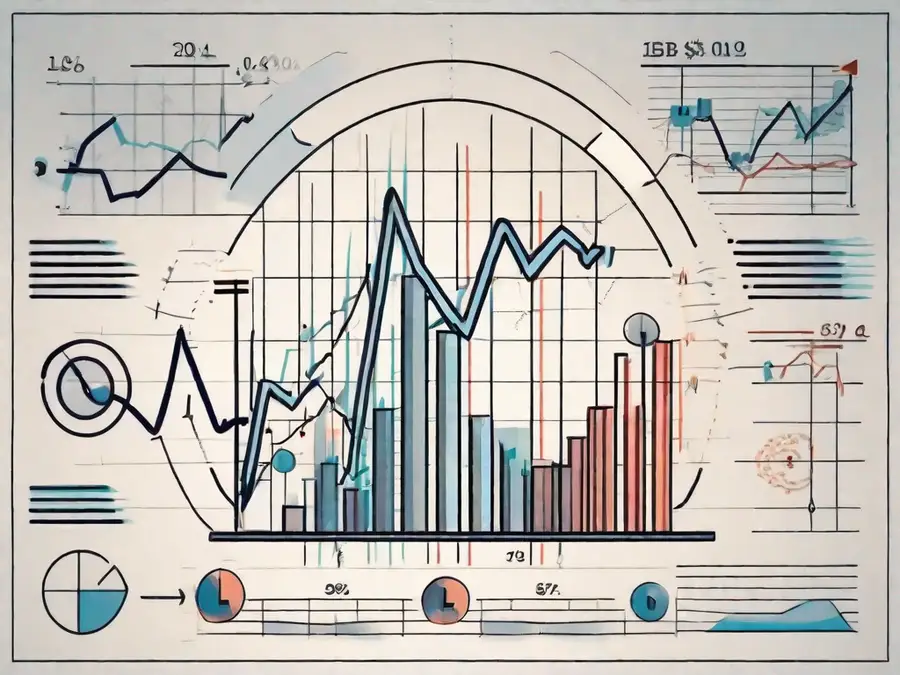The Ultimate Guide to Financial Trading

Hello fellow traders and investors! Welcome to the ultimate guide to financial trading. In this comprehensive article, I will demystify the world of financial trading and equip you with the knowledge and strategies you need to succeed in this exciting and dynamic field.
Understanding the Basics of Financial Trading
Defining Financial Trading
At its core, financial trading refers to buying and selling various financial instruments, such as stocks, currencies, commodities, and derivatives, with the aim of making a profit from price movements. It involves analyzing market trends, identifying opportunities, and executing trades based on well-informed decisions.
Financial trading is not just about making money; it is a complex and dynamic field that requires a deep understanding of the global economy, financial markets, and various trading strategies. Traders need to stay updated with the latest news, economic indicators, and geopolitical events that can impact the markets.
Successful traders possess a combination of technical skills, analytical abilities, and emotional intelligence. They are constantly honing their skills, adapting to changing market conditions, and managing risk effectively.
The Importance of Financial Trading
Financial trading plays a crucial role in today's global economy. It provides liquidity to markets, facilitates price discovery, and enables businesses and individuals to manage risks. Without financial trading, markets would lack efficiency, making it difficult for companies to raise capital and individuals to invest their savings.
Moreover, financial trading contributes to economic growth by allocating resources efficiently. It allows capital to flow to the most productive sectors, stimulating innovation, job creation, and overall prosperity.
Furthermore, financial trading offers individuals the opportunity to grow their wealth and achieve financial independence. It allows them to participate in the success of companies and economies, providing a means to build a secure future and achieve their financial goals.
Different Types of Financial Trading
Financial trading encompasses a wide array of strategies and approaches. Some popular types include:
- Day Trading: Buying and selling assets within the same trading day, aiming for quick profits. Day traders closely monitor price movements and use technical analysis tools to identify short-term trends.
- Swing Trading: Holding positions for a few days to weeks to capitalize on medium-term price movements. Swing traders analyze both technical indicators and fundamental factors to identify potential opportunities.
- Position Trading: Holding positions for weeks to months, based on longer-term trends. Position traders focus on fundamental analysis, studying economic data, company financials, and macroeconomic factors to make informed decisions.
- Algorithmic Trading: Executing trades using computer algorithms that analyze market data and apply predefined strategies. Algorithmic traders leverage technology to execute trades at high speeds, taking advantage of small price discrepancies.
Each type of financial trading requires a unique set of skills and approaches. Traders need to choose a strategy that aligns with their risk tolerance, time commitment, and market expertise. It is important to note that successful trading requires continuous learning, adaptability, and disciplined execution.
Building Your Financial Trading Foundation
Financial trading is a dynamic and exciting field that offers individuals the opportunity to participate in the global markets. Whether you're a seasoned investor or just starting out, it's essential to build a strong foundation of knowledge and skills. In this article, we will explore some key aspects of building your financial trading foundation.
Learning Financial Trading Terminology
Before diving into the world of financial trading, it's essential to familiarize yourself with the key terms and concepts. Understanding terms like “bid,” “ask,” “liquidity,” and “spread” will not only help you navigate trading platforms but also enable you to communicate effectively with other traders and investors.
For example, the bid price refers to the highest price a buyer is willing to pay for a particular asset, while the ask price represents the lowest price a seller is willing to accept. Liquidity, on the other hand, refers to the ease with which an asset can be bought or sold without causing a significant change in its price. The spread is the difference between the bid and ask prices and represents the transaction cost for traders.
By understanding these terms and concepts, you can navigate the complex world of financial trading with confidence and make informed decisions.
Grasping Trading Principles
Successful trading is built on a solid foundation of principles. These principles serve as guiding principles that help traders navigate the markets and make informed decisions. One of the most important principles is disciplined risk management.
Disciplined risk management involves setting clear risk parameters for each trade and adhering to them consistently. This includes determining the maximum amount of capital you are willing to risk on a single trade and setting stop-loss orders to limit potential losses. By managing risk effectively, traders can protect their capital and minimize the impact of losing trades.
Another crucial principle is proper trade execution. This involves entering and exiting trades at the right time and price. Traders need to develop a systematic approach to trade execution, which may include using technical indicators, chart patterns, or fundamental analysis to identify optimal entry and exit points.
Effective decision-making based on thorough analysis is also a fundamental principle of trading. Traders need to analyze market data, economic indicators, and other relevant information to make informed trading decisions. This may involve conducting technical analysis, which focuses on historical price patterns and trends, or fundamental analysis, which examines the underlying factors that drive market movements.
By applying these principles consistently, traders can enhance their chances of success in the markets and build a solid foundation for their trading journey.
Understanding Market Trends
Market trends are the primary drivers of price movements. By developing the skill of identifying and analyzing trends, traders can make informed trading decisions. Whether you prefer technical analysis or fundamental analysis, understanding and interpreting market trends is a fundamental aspect of financial trading.
Technical analysis involves studying historical price patterns, chart patterns, and technical indicators to identify trends and predict future price movements. Traders who use technical analysis often rely on tools like moving averages, trendlines, and oscillators to identify potential entry and exit points.
On the other hand, fundamental analysis focuses on analyzing economic data, company financials, and other factors that can impact the value of an asset. Fundamental traders look for factors such as earnings reports, economic indicators, and geopolitical events to make trading decisions.
By combining technical and fundamental analysis, traders can gain a comprehensive understanding of market trends and make more informed trading decisions. It's important to stay updated with the latest news, economic events, and market developments to identify potential trends and opportunities.
Building a strong foundation in financial trading requires continuous learning and practice. By familiarizing yourself with trading terminology, grasping trading principles, and understanding market trends, you can develop the skills and knowledge necessary to navigate the markets with confidence. Remember, trading involves risk, and it's essential to approach it with a disciplined and informed mindset.
Developing a Successful Trading Strategy
Setting Your Trading Goals
Before embarking on your trading journey, it's crucial to define your goals. Are you looking for short-term gains or long-term wealth accumulation? Understanding your objectives will help shape your trading strategy and guide your decision-making process.
Risk Management in Trading
Risk management is paramount in financial trading. It involves assessing and mitigating potential risks associated with each trade. Implementing proper risk management techniques, such as position sizing, stop-loss orders, and diversification, can help protect your capital and reduce the impact of potential losses.
Choosing the Right Trading Style
Every trader has a unique trading style that suits their personality, time availability, and risk tolerance. Whether you prefer scalping, momentum trading, or value investing, finding the right trading style that aligns with your strengths and preferences is key to long-term success.
Exploring Different Financial Markets
Stock Market Trading
The stock market is one of the most well-known and widely followed financial markets. Investing in shares of publicly traded companies allows you to participate in their growth and potentially earn dividends. Understanding fundamental analysis, company financials, and market sentiment are crucial in stock market trading.
Forex Trading
Forex trading involves buying and selling currencies in the foreign exchange market. As the largest and most liquid market in the world, forex trading offers ample opportunities for traders. Keeping an eye on economic indicators, geopolitical events, and central bank decisions can help navigate the dynamic forex market.
Cryptocurrency Trading
The rise of cryptocurrencies, such as Bitcoin and Ethereum, has given birth to a new asset class for traders. Cryptocurrency trading involves speculating on price movements of digital currencies. Staying updated with blockchain technology, regulatory developments, and market sentiment is crucial in this fast-growing market.
Personal Advice:
Throughout my trading journey, one important lesson I've learned is the value of patience and discipline. Emotions can run high in the markets, but making impulsive decisions based on fear or greed can lead to costly mistakes. Stick to your trading plan, stay informed, and remain focused on long-term success.
Frequently Asked Questions
What is financial trading?
Financial trading involves buying and selling various financial instruments with the aim of making a profit from price movements.
What are the different types of financial trading?
Some popular types of financial trading include day trading, swing trading, position trading, and algorithmic trading.
What are the key principles of successful trading?
Successful trading is built on principles such as disciplined risk management, proper trade execution, and effective decision-making based on thorough analysis.
How important is risk management in trading?
Risk management plays a crucial role in trading as it helps protect your capital and reduce the impact of potential losses.
What factors should I consider when choosing my trading style?
When choosing your trading style, consider factors such as your personality, time availability, and risk tolerance. Find a style that aligns with your strengths and preferences.
What are some popular financial markets to explore?
Stock market trading, forex trading, and cryptocurrency trading are all popular financial markets to explore.
Now that you have the ultimate guide to financial trading at your disposal, it's time to embark on your trading journey with confidence. Remember, continuous learning, discipline, and adaptability are the keys to thriving in this ever-evolving field. Best of luck on your trading adventures!
Ready to align your investments with your new trading platform? Discover the future of trading with Morpher, the innovative platform that integrates the power of blockchain technology for a seamless, trading experience across a multitude of markets. With Morpher, you can trade with zero fees, enjoy infinite liquidity, and engage in fractional investing and short selling, all while maintaining safety and control over your funds. Elevate your trading with up to 10x leverage and explore unique markets like NFTs, watches, and sneakers. Sign Up and Get Your Free Sign Up Bonus today to start investing in a way that's as forward-thinking as your values.

Disclaimer: All investments involve risk, and the past performance of a security, industry, sector, market, financial product, trading strategy, or individual’s trading does not guarantee future results or returns. Investors are fully responsible for any investment decisions they make. Such decisions should be based solely on an evaluation of their financial circumstances, investment objectives, risk tolerance, and liquidity needs. This post does not constitute investment advice.

Painless trading for everyone
Hundreds of markets all in one place - Apple, Bitcoin, Gold, Watches, NFTs, Sneakers and so much more.

Painless trading for everyone
Hundreds of markets all in one place - Apple, Bitcoin, Gold, Watches, NFTs, Sneakers and so much more.









